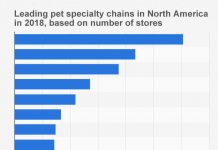Peer pressure and tribalism guide consumers’ beliefs about pet food more than expert opinions and scientific data.
Peer pressure and tribalism guide consumers’ beliefs about pet food more than expert opinions and scientific data, said Jayson Lusk, Ph.D., head of the Department of Agricultural Economics at Purdue University during his presentation at the Ninth Annual Feed and Pet Food Joint Conference, held September 17-19, 2018, in St. Louis, Missouri, USA.
“We are social beings, and our cultural values shape our perceptions of risk, what we find acceptable and our beliefs about how safe something is,” said Lusk.
To educate or influence pet owners, brands must speak to consumers through trusted peers and group leaders, he said. People tend to divide themselves into likeminded groups. At the same time, people shape their own opinions and beliefs to match those of their friends and community members to avoid being ostracized or causing conflict. Pet owners are no different, so their belief about the value of certain pet food characteristics are shaped more by trusted peers.
Subjectivity of pet food beliefs
Lusk said that the values people hold aren’t just “out there,” meaning that beliefs don’t exist in an objective manner, apart from human minds that subjectively judge one thing to be positive and another to be negative.
“They are things that we construct to fit in with the people around us,” he said “A lot of belief is motivated reasoning.”
In other words, a person wants to believe certain things because that’s what their friends believe and they want to belong with their friends, he said.
“We all fit in a tribe,” he said. “It’s more important to me to fit into my tribe than it is to have some belief that’s going to put me at odds with my friends and colleagues.”
Tribalism in value judgments and beliefs
The set of beliefs that a particular group holds may have little to do with each other, Lusk said. Yet, disparate topics often show strong correlations in measures of peoples’ values, such as voting patterns.
For example, in two separate election cycles, California voters expressed their opinions on same-sex marriage and GMO labeling. Voting patterns for the two ballot items were nearly identical. The coastal cities tended to be in favor of both same-sex marriage and GMO-labeling, while the inverse was true of inland areas.
“They don’t really have anything to do with each other,” he said. “There’s something else going on here, There’s some set of common cultural values or sets of tribes that choose to believe things in common ways… The debate about GMO labeling had very little to do with the science of GMO labeling, otherwise we wouldn’t see this very high correlation between these two very different issues.”
“In a lot of ways this is kind of an urban rural divide,” he said.
Packaged Facts’ publisher David Sprinkle explored that urban-rural divide in pet food markets. In his Petfood Industry column, Sprinkle used Simmons market data to make these observations:
- Top 14 metro area pet owners are nearly one-fourth more likely than average to buy pet products at pet superstores or online, while pet owners outside of the top 50 metro areas are sharply less likely to do so.
- Top 25–50 metro area pet owners are roughly a third more likely to buy pet products at wholesale clubs or independent pet stores, as are top 15–50 metro area pet owners for drugstores/c-stores.
- Top 14 metro area pet owners are significantly less likely than average to buy pet products at discount stores, while pet owners outside of the top 50 metro areas are significantly more likely to do so.
How to use tribal communications in pet food
Pet food companies can improve consumer outreach efforts by crafting messages that fit tribal beliefs.
“If you want to communicate with people, you’ve got to do it through the tribe that they’re a part of,” Lusk said. “You’ve got to understand the communities they belong to, the values you’re using, and communicate with them through the trusted members of their community.”
“It’s not ‘let me tell you the information because I’m the expert, or I’m the scientist,’” he said. “It’s got to be, ‘I’m a trusted person and your friends trust me.’ When you have a set of shared values, now people will be willing to listen to you a little bit.”
“That’s not easy to do, but it’s the reality of communication and how it works and how people are swayed,” Lusk said.
































